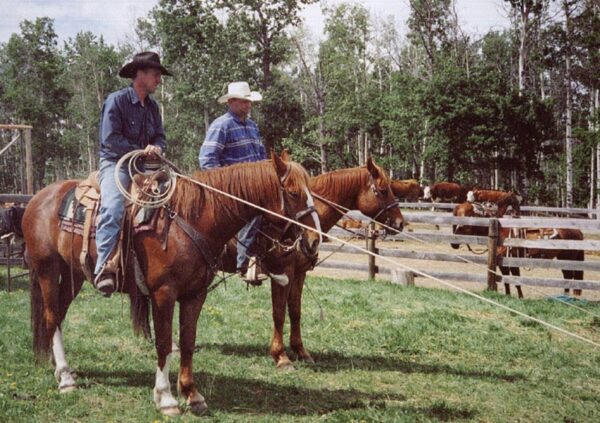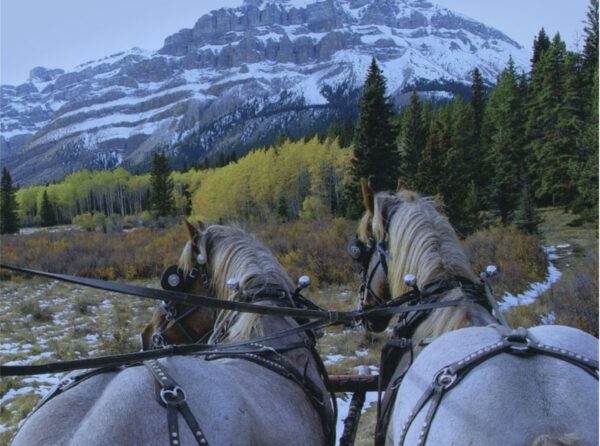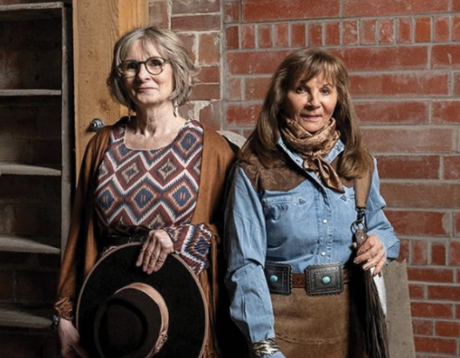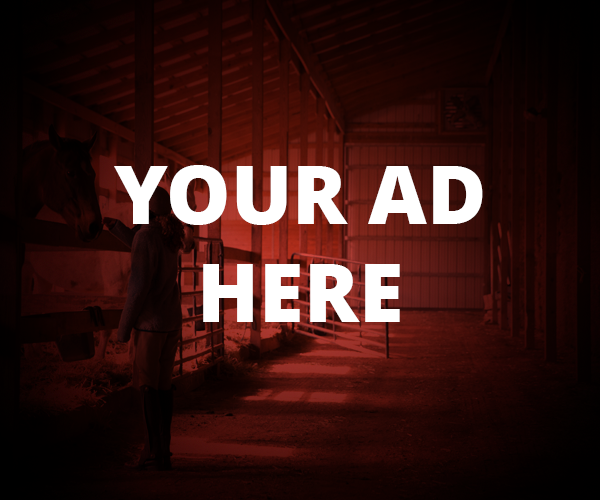Alberta’s Trailblazing Ranchers ~ By Dianne Finstad
People with a sense of adventure love to visit the West Country of central Alberta’s Parkland. But the real adventurers were those who came to the region when it was truly untamed and stayed to carve out a place and build a family legacy.

George Albert Willsie was one of those bold pioneers. Of Dutch and British descent, he and three other families left their homes near London, Ont., and came to the frontier in what’s now known as Caroline country where, more than 100 years later, the fourth generation of the Willsie family still ranches.
“Grandpa came for cheap land in 1906,” says Leroy Willsie. “At that time out here you could get a whole quarter for 10 dollars… They came by train and got off at Olds. They looked at a homestead map in the land office in Olds and picked from what was available.”
The new homesteaders journeyed west of Bowden, fording the Red Deer River to get to their location. Then the real work began, “proving up” their land and settling their families. “They brought some cows from Ontario with them, and one oxen they drove with a horse,” said Leroy. “It was pretty much just survival for those first few years.”
The men thrived as experienced sawers and their family sawmill proved to be a steady source of revenue.
George and his wife, Abby, had six children, including Leroy’s dad, Oliver, who was 16 when they came west. The seventh child was born on the home- stead, prompting the building of the region’s first school at Pineview.

In 1916, two sons, Oliver and Gordon, went off to serve in the First World War. Oliver worked as an engineer with the supply trains, but Gordon lost his life in the muddy Battle of Passchendaele in 1917.
When Oliver came home, he bought another quarter and the family began to spread out. There was a pretty, spunky teacher named Ruth Livingston at the Pineview School who caught Oliver’s eye, and they courted some. Then she returned home to Burdett. “We’ve got a letter he sent her,” says Diane, Leroy’s wife, with a smile. “I think it was a poem he’d found and it was something about when the birds come back in the spring, you’ll come back to me. It was quite romantic.”
It worked; they married in 1925 and started their family. Leroy was the second-youngest of six children. He lost a brother and a sister to polio in the early 1950s. Times were never easy in the woods, and Leroy can remember doing his part at an early age. “I learned to milk when I was pretty young. We were all sent to the bush and worked the sawmill. We skidded the logs out with horses. I was probably six when I first rode the skid horse. They could pretty much go on their own, but you could skid more logs if you had someone to hurry the horse back and forth.”
Horsemanship skills were also developed at an early age, since horses were the mode of transportation to school. It was a nearly four-mile ride to the Rich Hill School. The Willsie kids rarely rode the well- broke, bomb-proof horses. “We usually rode colts to school,” recalls Leroy. “We’d get them broke and then Dad sold them. Sometimes we had to tie them to a tree to get on.”

In the winter, loose hay had to be loaded on a wagon and hauled home over the frozen river. It was a 14-mile round trip, three times a week. Having a good draft team was important to the family; Mac and Nally were two of the best, most reliable hands when it came to winter feeding. Leroy laughs: “They were cheaper to run and started every day.”
The emerald-green West Country rarely lacks for moisture – and where there’s water, there’s wildlife. Grandpa Oliver loved to provide for his family by hunting deer and moose. “We ate lots of wild meat,” adds Leroy. “There was no refrigeration so it was all canned, except in the winter when we could keep it frozen.”

The Willsies were also along a busy trading route for the Stoney Indians. “They would come from Morley all the way to Big Horn on a trail west of Caroline,” says Leroy. “When I was a kid, they’d go through all the time. They would trade moccasins and gloves with us for deer and moose hides. It was a regular trip they’d make two or three times every summer.”
Not all Willsies opted to stay in the West Country, but Leroy knew he wanted to build his future there. That was especially true after he spotted Diane Neufeld at a dance at James River. She was a ranch kid, too, so she knew exactly what she was getting into when she married him in 1962.
As the next generation of Willsies put down their roots, ranching played a bigger role in their world. Oil and gas exploration moved into the region; Leroy spent some time in the oil patch. Financially, that helped him set up his own quarter, about 15 miles northwest of the original family homestead. Today, he’s the only one of his family actively ranching, but not the only Willsie making a living on horseback.
Cowboying was a way of life for the Willsies; entertainment was homemade. Using those well-honed ranch skills for competition came naturally. “My brother John first got the rodeo bug,” says Leroy. “He used to ride bareback horses.”
There was one small problem, though – the disapproval of their mother Ruth. It wasn’t until after Leroy’s stint in the oil patch that he began to rope and steer wrestle. Rodeo grew into a big part of his family’s world. It became a part of community life when the Willsies built the first indoor arena in the area.

“When you have three boys and a husband,” Diane smiles, “you get kind of outnumbered.” The arena grew into an important gathering place, where many of the sport’s legends got their start – cowboys like Tom Eirikson, Joe Lucas and Bruce Robinson, along with their own sons Gerald, Glen and Brent Willsie. Bronc riders like Ivan and Duane Daines, Gary Logan and Guy Shapka were frequent visitors, too.
There was rodeo practice at the arena nearly every day and night. “Mom would serve cake and coffee and get a gallon of sand in the house,” Gerald says. “But it was our recreation, our social life.”
Leroy won a team roping title in the Foothills Cowboys Association, and proved successful as a wild cow milker. The Willsie boys all rode steers, but as they grew, roping and steer wrestling became their events of choice. As Leroy encouraged and supported their efforts, he let his own rodeo pursuits take a back seat to theirs. “We always had good horses,” says Gerald. “When I rodeoed, I didn’t have the fancy rig, but when I backed the horse out of the trailer – it was always something worth getting on.”
A highlight for the entire family came in 1989 when Gerald won the Canadian Steer Wrestling Championship. “Dad was a big part of my success rodeoing,” says Gerald. “He always covered so I could leave. I couldn’t have done it on my own. He’s always been a real giver, especially for his family.” It’s an example Gerald and his wife, Joyce, hope to carry on for their three daughters.
Although today they each have sizeable cattle herds of their own, Gerald and his father, Leroy, often work together. Glen works as a full-time outfitter and Brent continues to rodeo. All are never more than a phone call away from lending a hand.
Rising to the challenge of the West Country wilds isn’t easy – but the Willsies have done it. “We enjoy the country. The fishing, the hunting, the lifestyle,” says Leroy. “It was his dream to have a ranch with a hundred cows,” says Diane. “He’s living his dream.”
A ranch girl from south of Manyberries, Dianne Finstad has covered the sport of rodeo for 25 years. She is the Agriculture and Rodeo Director for KG Country Radio and makes her home in Red Deer.
Photos courtesy Willsie family, Shannon Willsie, Dianne Finstad
Originally Published August/September 2008 Canadian Cowboy Country Magazine















